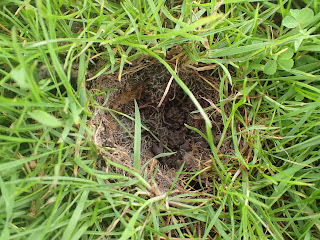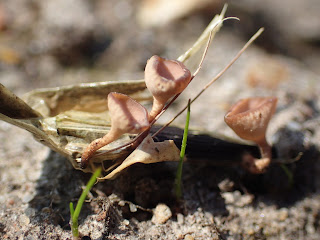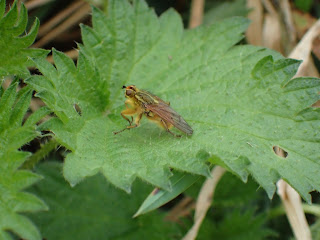21st April 2018
I'd just returned from Mannington, and with Cathy & Rose out I made myself a cup of tea and sat down to check my emails. A few minutes later I saw a message from Gary on Twitter to say he had just found a Wheatear at Thorpe Marshes. Wheatears are just about annual locally, but typically only one or two a year and staying a few hours. I'd never seen one at Whitlingham or Thorpe, so with a baleful look at my cup of tea I grabbed my bag and headed back out.
Once on site I called Gary to ask whereabouts he had seen it last, and found out that a family was currently walking down the path where the Wheatear had been. I walked over to the middle of the marsh, stopping briefly for a chat with Susan who had just completed a lap. There was no sign initially on the paths or in the dead tree nearby, but turning round I spotted the Wheatear on a gatepost. Hurrah! The first Wheatear of the year is always a bit special, but to see one here was much more so.
I watched the Wheatear for a while before it hopped down and walked off through the rushy grassland. Gary appeared and we heard a Grasshopper Warbler reeling distantly near the railway line. The Wheatear then reappeared on the gate and we got excellent views. It was quite confiding, so in a rare burst of photographical acumen I laid on the gravel path so that I could see a nice blue background behind it instead of the cluttered marsh or trees.
This sighting brought my patch list up to 149 birds, tantalisingly close to my medium-term target of 150. Possible 150th species that might be possible this spring include Garganey, Osprey, Crane, Black-tailed Godwit, Golden Plover, Ringed Plover, Curlew, Ruff or Yellow Wagtail, but it could just as easily be something completely unexpected. A big thanks to Gary for finding the Wheatear and letting me know about it. This year I have less time to spend birding, so having an excellent network of local birders is much appreciated.
There was a final bonus sighting for the visit, as after crossing the footbridge and walking back towards Thorpe St Andrew I spotted a solitary bee on the road. It was still alive so I picked it up to move it to the side so it didn't get squashed, and noted sime pale grey hairs on the lower parts. At home I managed to identify it as Andrena nitida. At the time I thought it would be a new species for me, but consulting my records I did see one at Whitlingham in 2016, when it became my 998th patch species!



















































